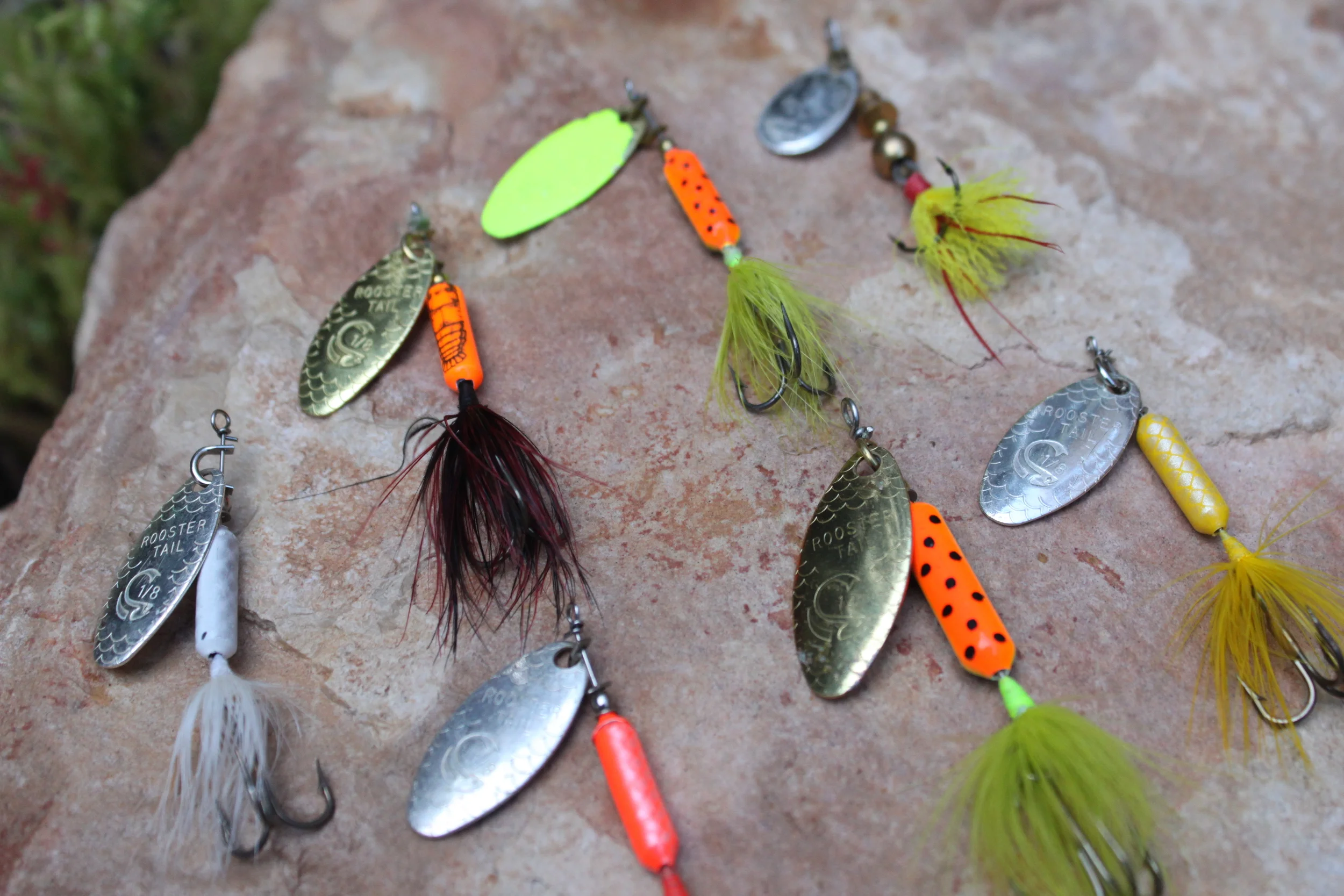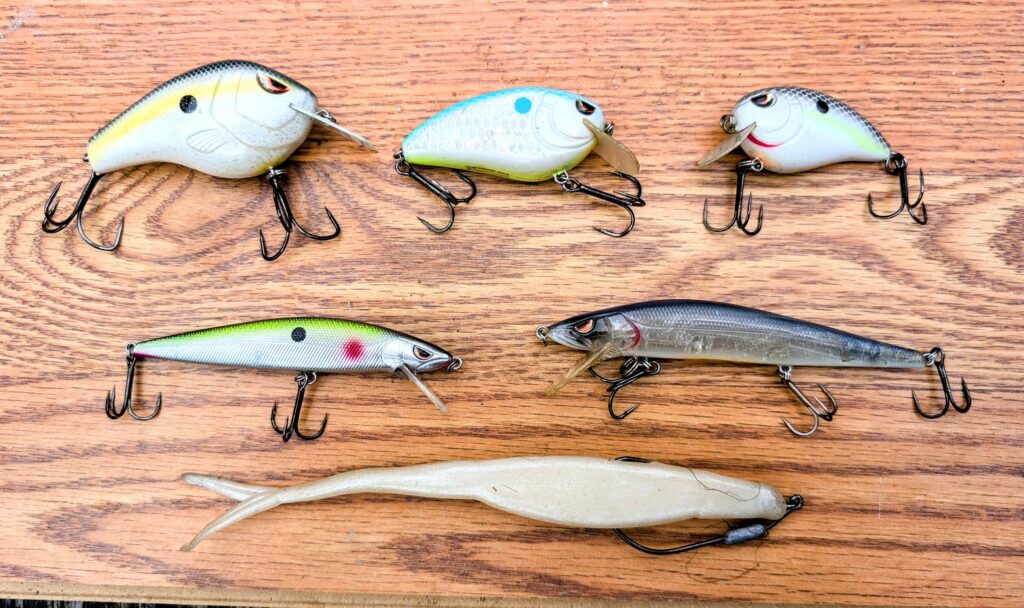Choosing the Best Bass Fishing Lures for Spring, Summer, Fall, and Winter
Wiki Article
Discover the very best Techniques for Choosing Bass Lures for Your Next Angling Journey
Choosing the right bass Lures can significantly affect fishing success. Anglers must take into consideration numerous factors, such as seasonal patterns and water quality. Understanding bass actions is crucial (Best Bass Lures). Choosing Lures that mimic natural target can result in better outcomes. Yet, many are unsure about the very best techniques to execute. What techniques should one prioritize to enhance their angling experience? The solutions hinge on examining specific conditions and adjusting as necessaryComprehending Bass Actions and Environment
Recognizing the subtleties of bass habits and habitat is essential for any angler aiming to boost their fishing success. Bass are often found in various settings, consisting of reservoirs, rivers, and lakes, where they look for framework such as submerged rocks, plant life, and dropped trees. Their behavior is greatly influenced by water temperature level, light levels, and available forage.Throughout warmer months, bass often tend to be much more active, commonly populating shallower waters, while in colder months, they pull back to much deeper areas. In addition, bass display patterns of feeding, frequently being extra aggressive throughout dawn and dusk. They are opportunistic predators, preying on smaller sized fish, pests, and crustaceans. Comprehending these elements can help fishermens identify prime angling areas, as well as the best times to fish. Recognizing bass behavior in relation to their environment is important for successful angling, assisting anglers in making notified choices about where to cast their lines.
Matching Lures to Seasonal Conditions
As anglers adjust their strategies to changing seasons, matching Lures to seasonal conditions ends up being a crucial technique for improving angling success. In spring, when bass are arising from winter months inactivity, anglers commonly make use of spinnerbaits and shallow-running crankbaits to mimic the movements of victim. Summertime requires a shift to topwater Lures or soft plastic worms, as bass seek shade and cooler waters. During the autumn, when bass are fattening up before winter season, larger Lures that mimic baitfish can be reliable. Winter calls for a more subtle technique; jigs and slow-moving skill lures commonly generate far better outcomes as bass end up being inactive. Recognizing these seasonal patterns aids anglers select the right appeals, thereby increasing their chances of an effective catch. By lining up attraction choices with the all-natural actions of bass throughout the year, anglers can maximize their angling experience and boost their general success on the water.The Significance of Color Selection
Shade choice plays a crucial duty in bass fishing, as it can considerably influence a fisher's success. Aspects such as water clarity, seasonal adjustments, and the certain preferences of various bass types all influence which shades are most effective. Understanding these components enables anglers to make enlightened options that enhance their angling experience.
Water Clearness Considerations
When the water clarity differs, choosing the best bass lure color becomes essential for drawing in fish. In clear water, all-natural colors such as shad or bluegill patterns often tend to be extra efficient, as they resemble the prey bass are accustomed to seeing. On the other hand, in murky or discolored water, brighter shades like chartreuse or fire tiger can enhance presence, making it simpler for bass to identify the lure. The contrast between the appeal and the surrounding setting plays a considerable function in angling success. Fishermens should additionally consider the time of day; lighter colors may function better in brilliant sunshine, while darker hues can be much more efficient throughout low-light problems. Adapting appeal shade to water quality optimizes the opportunities of a successful catch.Seasonal Color Scheme
Just how do seasonal changes influence bass habits and appeal efficiency? As temperatures change throughout the year, bass change their feeding routines and liked habitats, making color selection important for effective fishing. In springtime, when bass generate, bright shades like chartreuse can draw in interest. Summertime commonly ask for more all-natural colors, such as eco-friendly pumpkin or shad patterns, as bass seek to assimilate with their surroundings. Throughout fall, vivid shades like orange and red simulate the changing vegetation, enticing bass as they plan for wintertime. In winter, controlled tones such as white or gray may be much more reliable, as bass come to be lethargic. Inevitably, recognizing seasonal shade patterns enables fishermens to choose Lures that resonate with bass's existing habits, enhancing their chances of success.
Species-Specific Preferences
Comprehending species-specific preferences is vital for anglers seeking to enhance their appeal choice. Different bass types, such as largemouth and smallmouth, show special shade preferences based upon their environment and feeding habits. Largemouth bass typically choose darker hues, especially in murky waters, where shades like black and dark green resemble all-natural target. On the other hand, smallmouth bass are most likely to reply to brighter shades, such as chartreuse and orange, particularly in clear waters. In addition, water quality and light problems can affect these choices, making it crucial for fishermens to adjust their lure shade appropriately. By considering these species-specific choices, anglers can increase their possibilities of a successful fishing expedition, eventually enhancing their overall experience on the water.Choosing the Right Draw Type for Different Circumstances
Choosing the suitable appeal type for various fishing scenarios is critical for success on the water. Anglers should take into consideration factors such as water clearness, weather conditions, and the bass's feeding routines. For dirty water, darker-colored lures, such as spinnerbaits or jigs, can be efficient, as they create a solid silhouette. In clear water, natural-colored Lures like soft plastics or topwater lures might lure cautious bass.When angling in heavy cover, making use of heavy jigs or weedless gears can help browse through obstacles without getting. On the other hand, open water circumstances may benefit from crankbaits or swimbaits that can cover greater distances. In addition, throughout cooler months, slower-moving Lures often tend to be a lot more reliable, while warmer conditions might call for faster retrieves. By adapting attraction choices to specific environments, fishermens increase their chances of a successful catch.
Trying out Dimension and Action

Anglers typically experiment with a variety of activities and sizes to determine what jobs best under varying conditions. A slow, subtle activity could be optimal in cooler water, while a quickly, aggressive obtain might be extra reliable in warmer temperature levels. By very carefully observing the bass's reactions to these variants, anglers can improve their technique and enhance their possibilities of a successful catch. Inevitably, the ideal mix of dimension and activity can make a considerable distinction on the water.
Checking Out Water Problems for Better Tempt Options
Comprehending water problems is important for selecting the best bass attraction. Variables such as water clarity and temperature can substantially affect fish behavior and feeding patterns. By analyzing these problems, anglers can make enlightened choices that improve their chances of an effective catch.Assessing Water Clearness
Just how does water clearness influence the efficiency of bass lures? Water clarity considerably impacts bass habits and the visibility of appeals. In clear water, bass tend to be more mindful, making natural-colored Lures more effective as they simulate victim carefully. Fishermens might pick lighter, subtler shades to stay clear of startling fish. Alternatively, in dirty or tarnished water, better and more vibrant shades stick out, standing out also in low exposure conditions. Furthermore, the kind of attraction can differ; slower-moving Lures might work better in clear water, while faster, extra hostile discussions can attract bass in murkier environments. Recognizing the clarity of the water allows anglers to pick Lures that optimize their possibilities of success during their fishing expedition.Comprehending Water Temperature
As water temperature level varies, it straight affects bass habits and their feeding patterns, making it vital for fishermens to consider when choosing lures. Usually, bass choose warmer temperatures, commonly between 65 ° F and 75 ° F, where their metabolic rate is heightened, causing raised feeding task. In cooler water, bass come to be tired and may like slower-moving lures, such as jigs or soft plastics. On the other hand, during warmer months, faster discussions like crankbaits or topwater Lures can be much more effective. Fishermens should likewise think about seasonal changes; for instance, spring warming leads to aggressive feeding as bass prepare to spawn. By understanding exactly how temperature level influences bass, anglers can make educated decisions on appeal selection, dramatically improving their possibilities Best Bass Lures South Africa of success.Tips for Organizing and Maintaining Your Tempt Collection
While several fishermens concentrate on picking the right Lures for their following fishing journey, keeping an appeal and arranging collection is similarly important for improving performance and efficiency. A well-structured collection enables anglers to quickly find the Lures they require, lowering time invested rummaging via deal with boxes.To start, fishermens should classify Lures by type-- crankbaits, jigs, or soft plastics-- making it easier to find specific options. Using tackle trays or boxes with adjustable areas can assist maintain whatever arranged. Identifying containers simplifies the procedure additionally, helping quick recognition.
Regular maintenance is likewise essential; anglers must check Lures for signs of wear, such as rusted hooks or damaged paint, and replace them as essential. Cleaning Lures after each journey prevents degeneration and makes certain durability. By carrying out these business and maintenance methods, anglers can boost their angling experience and ensure their Lures are constantly in optimal problem.
Regularly Asked Concerns
What Are the Best Brands for Bass Lures?
The very best brand names for bass Lures consist of Rapala, Strike King, and Berkley. These brands are renowned for their efficiency, top quality, and development, attracting both novice and experienced anglers looking for successful fishing experiences.The Number Of Lures Should I Tackle a Journey?
A regular fishing expedition need to include around 5 to ten attractions, permitting adaptability while preventing clutter. This selection needs to incorporate numerous kinds and shades to adjust to altering problems and fish preferences.Can I Make My Own Bass Lures?
Yes, people can make their own bass Lures using various products and techniques - Best Bass Lures South Africa. Crafting Lures permits for customization, making it possible for anglers to explore shapes, sizes, and shades to suit details fishing conditions and preferencesWhat's the Typical Life-span of a Bass Draw?
The ordinary life expectancy of a bass attraction differs, generally lasting from a couple of months to several years, depending on material top quality, usage regularity, and environmental problems. Proper treatment can substantially extend a lure's use.Are There Details Lures for Evening Angling?
Yes, there specify Lures created for evening fishing. Dark colors and Lures that generate resonances, such as spinnerbaits or jigs, often bring in bass in low-light problems, improving visibility and activating predacious impulses.On the other hand, in murky or stained water, brighter shades like chartreuse or fire tiger can improve exposure, making it easier for bass to spot the lure. Bigger Lures can draw in larger bass, while smaller sized Lures might be a lot more reliable for catching smaller fish. Furthermore, the kind of appeal can differ; slower-moving Lures may function better in clear water, while much faster, extra hostile presentations can tempt bass in murkier settings. As water temperature fluctuates, it straight influences bass habits and their feeding patterns, making it important for fishermens to think about when selecting appeals. While lots of anglers focus on selecting the right Lures for their next angling trip, organizing and keeping an attraction collection is just as crucial for improving performance and efficiency.
Report this wiki page